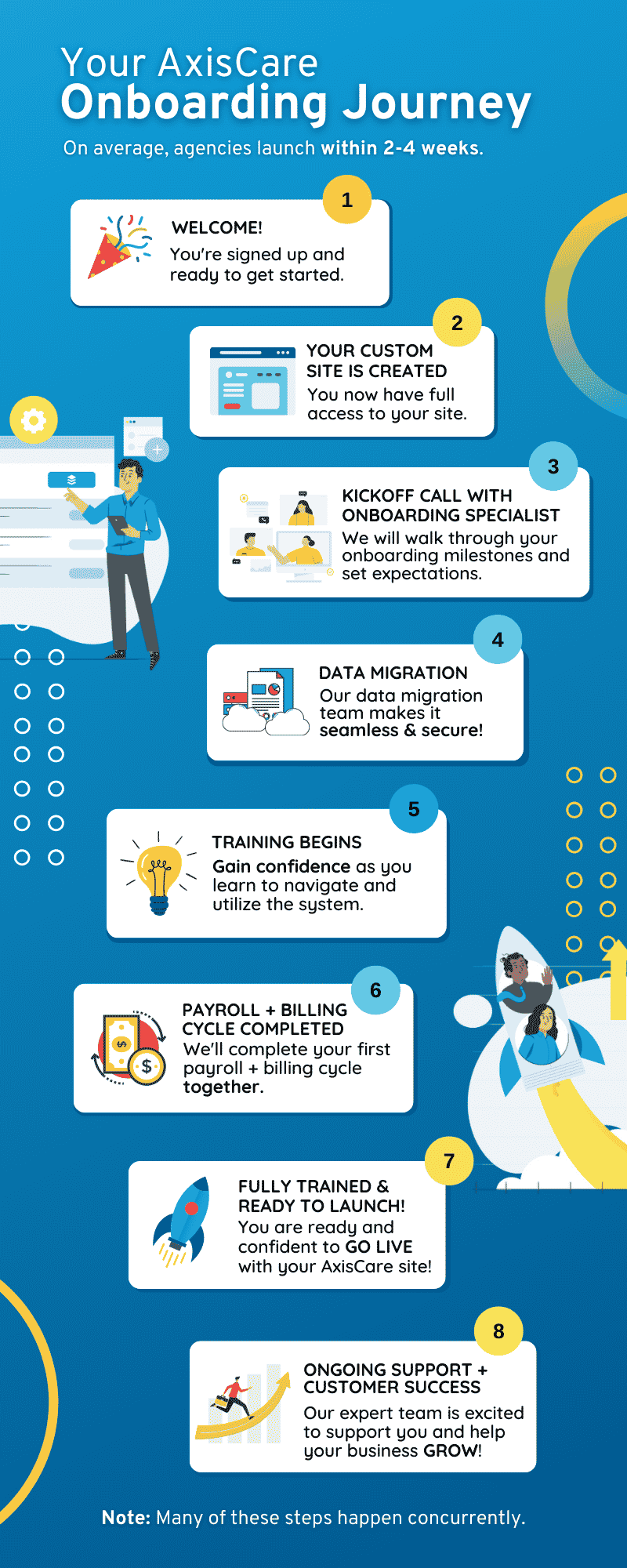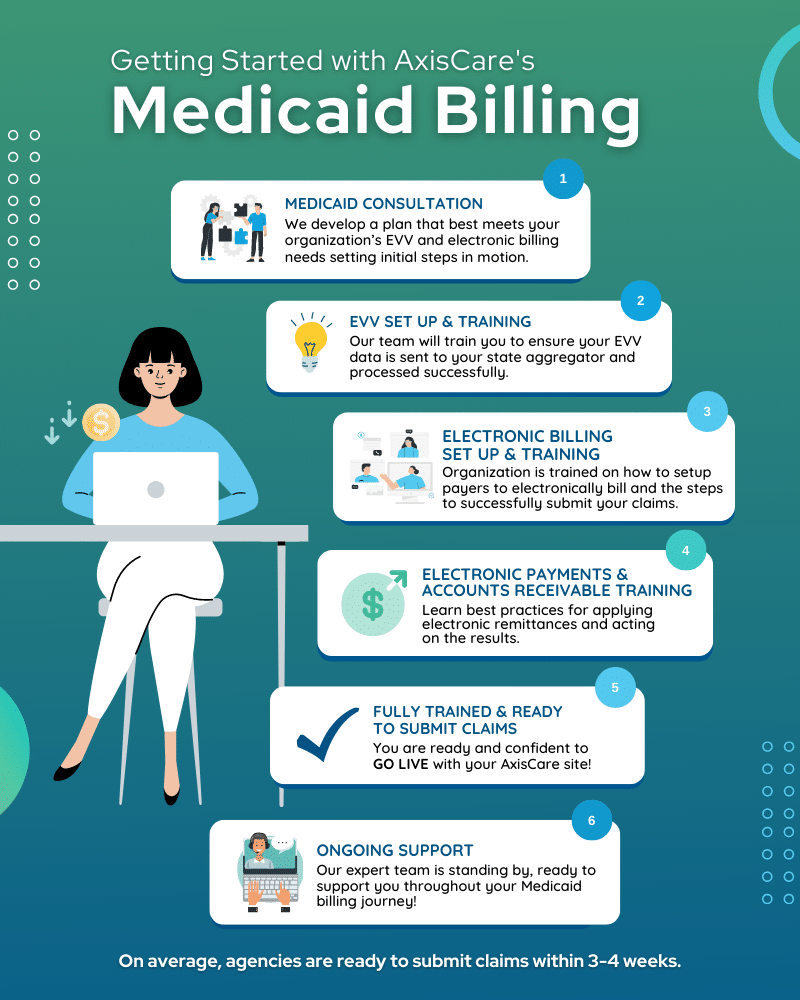Life is always hectic when you’re running a home care agency. There are caregivers to schedule, clients to monitor, payments to process, and teams to coordinate – just to name a few.
It’s a tall order to fill every day, which is why most health care providers in the United States are increasingly relying on digital solutions to get the job done. From telehealth services to remote patient monitoring, essentially every type of tech-enabled care tool has become more popular within the last decade. But this has presented a new challenge for agencies: the more digital tools you add to your arsenal, the more complex your workflows can become.
Home care systems for agencies exist to bring health organizations into the digital age without overwhelming their staff. With all key functions happening under a single digital roof, agencies can make the most of the tools available to them while cutting down on wasted time and resources.
Here’s how those platforms can be woven into a management improvement strategy, bolstering its effectiveness and equipping staff with performance-enhancing resources.
5 Effective Strategies to Enhance Home Care Management
Effective home care management has a positive influence on both patient outcomes and overall operational efficiency. Here are five changes your agency can adopt to make an outsized impact on its performance.
1. Implement User-Friendly Care Plans
Standardizing the information input process is one of the best ways to reduce errors at the source. When caregivers use preset forms to record patient information, critical details are sure to be captured in full. This uniformity helps agencies maintain a complete picture of each patient’s needs, progress, and care history, which is the cornerstone of delivering high-quality care.
Standardizing the information input process is one of the best ways to reduce errors at the source. When caregivers use preset forms to record patient information, critical details are sure to be captured in full. This uniformity helps agencies maintain a complete picture of each patient’s needs, progress, and care history, which is the cornerstone of delivering high-quality care.
On a broader scale, standardized forms make it easier for every member of your team to complete their administrative tasks. Information that is collected in the same format simplifies data entry, reduces the need for work to be completed twice, and facilitates easier integration with EHRs or other tools in your digital ecosystem.
2. Leverage Technology & Digital Tools
Home care management software is a one-stop shop for all the digital tools agencies need to succeed. From an administrative standpoint, these platforms work overtime to take work off in-office employees’ plates: automated scheduling matches caregivers to patients using pre-set criteria, intelligent route optimization reduces travel time between appointments, and centralized billing makes it easy to collect and manage funds from multiple payer sources.
On the caregiver side of things, home care software standardizes the documentation process, ensuring patient records remain complete and accurate. It also greatly diminishes the amount of time spent on data entry, integrating with systems like EVV to speed up the verification process and using templates for quick information capture.
3. Foster Strong Communication Among Care Teams
Caregivers may spend most of their days on the road solo, but that doesn’t mean they don’t need to interact with other stakeholders. Given the remote nature of these roles, agencies need to invest in building a robust communication structure to avoid misunderstandings or crossed wires.
Mobile apps for caregivers enhance communication in two main ways: They make it easy to record accurate data during visits (which, in turn, reduces the need for back-and-forth) and create a point of connection with patients’ family members. This puts caregivers in a better position to transmit essential information to all parties involved instead of getting lost in translation.
On the flip side, admin mobile apps receive this up-to-date information and can then use it to improve operations and coordination. In-office staff can stay connected with field employees via push notification updates, alerting them to open shifts that can instantly be claimed in-app. What’s more, HIPAA-compliant two-way chat keeps stakeholders looped in while respecting the highest industry standards for data security.
4. Provide Ongoing Training & Support for Staff
If you want to manage your home care agency as effectively as possible, your entire organization will need to remain up-to-date with all that the industry has to offer. With continuous training and access to resources, caregivers and staff will always have an ear to the ground for best practices, emerging technologies, and evolving patient care standards.
In this industry, patient needs and medical guidelines can change rapidly. A robust education program will prevent knowledge from becoming stale and prepare staff to handle diverse situations, from complex medical interventions to effective communication with patients and families.
5. Regularly Assess & Optimize Operations
Home care management is a dynamic responsibility. For all the same reasons that agencies need to provide ongoing training and education for their staff, they also need to look inward to reflect on the current state of their operations.
Regularly assessing the effectiveness of your scheduling practices, communication, documentation processes, and other key pillars will ideally reveal bottlenecks, inconsistencies, and areas for improvement. When these processes are operating as efficiently as possible, caregivers can focus more on attending to their patients, and in-office staff spend less time spinning their wheels with redundant tasks.
How AxisCare Can Support Your Home Care Management
Want to be our next home care agency success story? Here’s how our platform helps agencies improve their management practices for the long haul.
- Automated scheduling tools that match care staff to open shifts, taking into account patient preferences and caregiver specializations
- Mobile apps that connect caregivers to in-office employees and families, enabling open lines of communication
- Billing features that make it easy to manage multiple payer sources, from insurance companies to private accounts
- Dozens of custom reports that paint a clear picture of your agency’s performance, including revenue, payroll, hours of care administered, and referrals
- Software integrations with training providers that can onboard, educate, and upskill employees on an ongoing basis
Your Next Steps for Improving Home Care Management
Choosing a home care agency software really can be this simple: request a live demo with the AxisCare team to find out how we can help your organization thrive.









